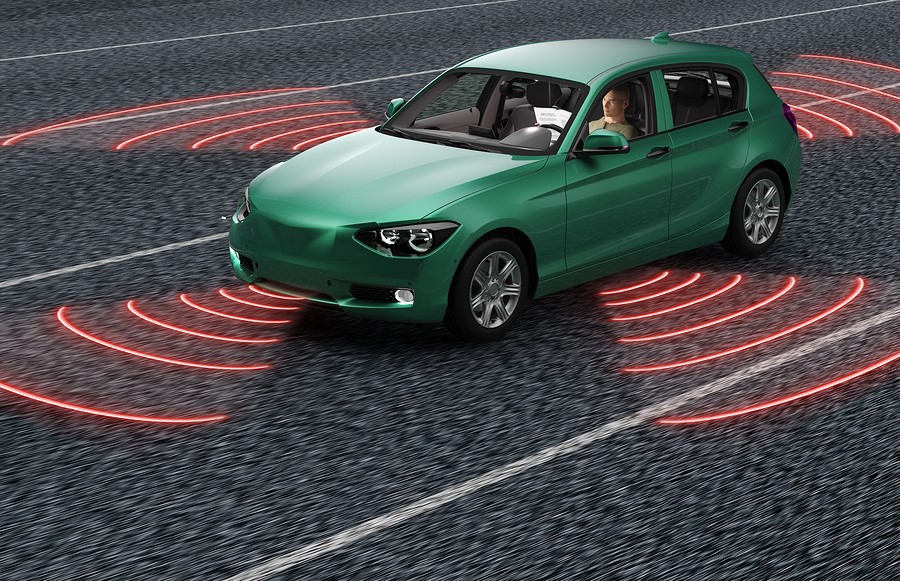
To create safer roads, with fewer accidents and fatalities, motor companies have been working on smart ways to make our cars safer. Here’s a rundown of some of the innovations that could be hitting UK roads in the near future.
V2V communication
Vehicle to vehicle (V2V) communication allows cars to digitally communicate with each other to avoid accidents; this includes sharing information on speed, position, and status of the brakes. It works by alerting the driving of a potential hazard so the driver can take action, or the car can automatically take action, such as emergency brakes.
Automatic Emergency Braking
Motor giants such as BMW, Ford, Volvo, Audi, amongst another’s have made a commitment to this becoming standard. Automatic emergency breaking provides the driver with an audio or visual warning if within a specific danger area of potentially causing a collision, if the driver does not react, the car will automatically break prior to the collision.
Blind Spot Awareness
Blind spot awareness function monitors those tricky areas, such as along the side and behind the vehicle, which can be difficult to see. The function can detect another vehicle and displays a warning sign in the glass of the wing mirror – allowing you to be alerted to what otherwise would be your blind spot. This feature is now available with the Mercedes-Benz E-class, called the ‘Lane Tracking Package’.
Night Vision
Night vision utilises infrared sensors that detect heat contrasts, and then displays these images on the dashboard or sat-nav. Night vision is a feature of the BMW, which alerts the driver to potential people or animals which could be up to 300m in front of the car. Night vision is particularly useful in more rural areas, such driving down those long country lanes in Cornwall on an evening.
Semi-autonomous Driving System
The new Mercedes 2017 E-Class, features the Driving Assistance Plus package, which allows the car to maintain a desired distance from cars in front, and even adapts the driving to speed limits based on camera and sat-nav information (Mercedes-Benz Cars UK Ltd, 2004-2017).
These technologies are moving us closer to self-drive cars. However there remain concerns over perhaps too many technologies all working together causing different audio and visual alerts to confuse the driver, cars becoming so advanced and sensitive they could break down more, and be way more expensive to fix. At present cars that display these features are mostly in top model cars, which most of us could only dream of owning.
There is also the question of becoming lazy, and losing the skills to drive a car.
Despite these concerns, these advances in car safety surely all have their benefit in preventing life changing and fatal accidents. How will these advances in technology affect UK driving laws? Would it mean anyone could get into a self-drive car, as if no driving is involved, no driving license is required?
Despite these concerns, Thatcham Research (2016) hope that self-drive cars can help build towards an accident free future. Presently cars have been developed at the semi-autonomous stage, but with hopeful results from their extensive testing, Thatcham Research hope to see driverless cars, within certain defined areas of the motorway, by 2021.
In addition to all these technologies allowing for hopefully safer driving, flying cars are also in the making!
SkyDrive
A team of Japanese engineers called Cartivator are working on a flying car called the SkyDrive. SkyDrive uses technology commonly found in drones, uses a four motor blades system, and will likely initially be a single person vehicle.
Cartivator’s vision is to develop a flying car with vertical take-off and landing, without requirements of roads or runways. Their aim is by 2050, for anyone to be able to fly in the sky and go anywhere in the world they want to go. They call it, SkyDrive. Their initial goal is for the SkyDrive to light the 2020 Tokyo Olympic flame (Cartivator 2012-2017).
It is no doubt an exciting time for aviation and motor industries, with many benefits of a flying car, including ease of travel across the world, reaching places before not possible, and even saving more lives through using flying cars as a real Air Ambulance.
However, before these flying cars can take off, there are many questions that need to be answered, including, how will the travel be policed? Will UK drink driving become a thing of the past? Could anyone travel to any country without restriction? What will the Air Traffic rules be? How will the cars be fuelled? And ultimately, do we want masses of flying vehicles whizzing over our heads? I will leave that answer up to you.
